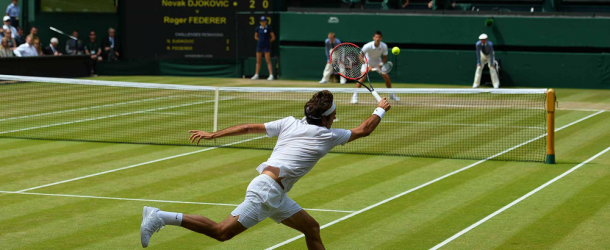It’s that time of year again. For the next two weeks, tennis will captivate the nation as 256 players battle for Wimbledon singles glory. Thousand of fans will descend upon 19 perfectly-trimmed courts, helping themselves to more than 140,000 punnets of ripened strawberries and 7,000 litres of fresh cream in the process.
We’ll be hoping Andy Murray can defeat the seemingly unstoppable Novak Djokovic this time round, that’s if he can get past the likes of Roger Federer and Stan Wawrinka first. In the female competition, Garbine Muguruza and Agnieszka Radwanska are posing a real threat to the once dominant Serena Williams, but we’ll be keeping our fingers crossed for Heather Watson, Johanna Konta and the rest of the British contingent.
It’s the event all tennis fans look forward to each summer, but it’s not the full story. British tennis enthusiasts play all year round, both indoor and outdoor and on a range of different surfaces. It’s fun, a great way to stay in shape and is accessible across a range of fitness levels and abilities. So, if you fancy following in the footsteps of Wimbledon’s tennis stars, here are some of the ways you can get involved:
Find tennis facilities in your local area
Before you can even consider swinging your racket, you’ll have to find nearby facilities to play. The Lawn Tennis Association (LTA) is a great place to start for any information on playing tennis. The LTA’s mission is to get more people playing tennis in Great Britain and to promote and safeguard the integrity of the sport. Use the LTA’s find a venue feature to discover tennis courts and facilities close to you.
There are also plenty of opportunities to get involved in organising and officiating at tennis competitions. There are many different roles in officiating, including tennis umpires and tennis referees, as well as the courses available to get you started.
Take the plunge in US college sport
College sport scholarships in the USA provide a unique opportunity to play tennis at an elite level while earning an internationally recognised university degree. They also grant access to some of the best playing facilities on the planet and some of the world’s most experienced coaches. Collegiate sport is big business across the pond, involving huge fanbases, massive corporate sponsorship and national television coverage.
John Isner, 18th seed in the Men’s Singles at Wimbledon and the current American number one, started off in US college sport. Isner is perhaps best known for his record breaking duel with Nicolas Mahut which, at a grand total of 11 hours and 5 minutes of play, became the longest professional tennis match in history. Before breaking records at Wimbledon, Isner set the school record for singles and doubles during his time at the University of Georgia.
To follow in Isner’s footsteps and get involved in US college tennis, apply for a US tennis scholarship with a leading collegiate sports agency such as Future Elite Sports or Sporting Chance USA.
Improve your stamina with cardio tennis
If competitive is just not in your nature, why not try out cardio tennis – a fun, sociable, high-energy fitness class that aims to improve both fitness and mental health. Cardio Tennis combines the best features of tennis with cardiovascular exercise, delivering a calorie-burning aerobic workout. Supported by qualified instructors and music, it’s all about building camaraderie and bringing a smile to your face.
A typical 60 minute session is broken into four sections. First, a warm up including dynamic stretching and drills to get your body and mind warmed up before the workout begins. Then, an aerobic section focuses on a range of shots including forehands, backhands, volleys and serves, all combined with fitness activities. Next is the tennis section which involves a variety of team games, before finally finishing with a cool down period of recovery and stretches.
Try out tennis adaptations for a range of disabilities
For the first time in Wimbledon history, 2016 will see a wheelchair singles tournament – adding to the wheelchair doubles which has been held each year since 2005. Wheelchair tennis is played on a regular tennis court without modifications to rackets or balls, meaning it is easy to integrate with the non-disabled game.
Beyond wheelchair tennis, there are an impressive range of adaptations available to those with visual impairments, hearing impairments and learning disabilities. Aside from boosting fitness and coordination, these variations of tennis can help to build social skills, self-esteem and independence.
To get involved with any of these adaptations, the Tennis Foundation cater for wheelchair tennis and offer subsidised camps for learning disability, deaf, and visually-impaired tennis.
![]()














